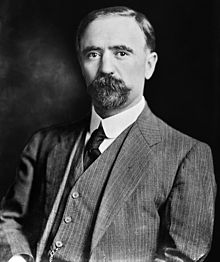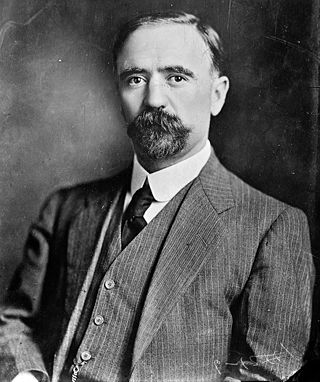
Francisco Ignacio Madero González was a Mexican businessman, revolutionary, writer and statesman, who became the 37th president of Mexico from 1911 until he was deposed in a coup d'etat in February 1913, and assassinated.
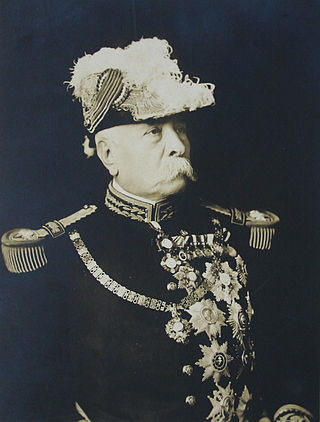
José de la Cruz Porfirio Díaz Mori, known as Porfirio Díaz, was a Mexican general and politician who served seven terms as President of Mexico, a total of 31 years, from 28 November 1876 to 6 December 1876, 17 February 1877 to 1 December 1880 and from 1 December 1884 to 25 May 1911. The entire period from 1876 to 1911 is often referred to as Porfiriato and has been characterized as a de facto dictatorship.
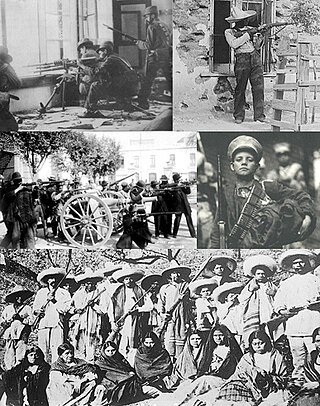
The Mexican Revolution was an extended sequence of armed regional conflicts in Mexico from approximately 1910 to 1920. It has been called "the defining event of modern Mexican history". It resulted in the destruction of the Federal Army and its replacement by a revolutionary army, and the transformation of Mexican culture and government. The northern Constitutionalist faction prevailed on the battlefield and drafted the present-day Constitution of Mexico, which aimed to create a strong central government. Revolutionary generals held power from 1920 to 1940. The revolutionary conflict was primarily a civil war, but foreign powers, having important economic and strategic interests in Mexico, figured in the outcome of Mexico's power struggles; the United States involvement was particularly high. The conflict led to the deaths of around three million people, mostly combatants.

Pascual Orozco Vázquez, Jr. was a Mexican revolutionary leader who rose up to support Francisco I. Madero in late 1910 to depose long-time president Porfirio Díaz (1876-1911). Orozco was a natural military leader whose victory over the Federal Army at Ciudad Juárez was a key factor in forcing Díaz to resign in May 1911. Following Díaz's resignation and the democratic election of Madero in November 1911, Orozco served Madero as leader of the state militia in Chihuahua, a paltry reward for his service in the Mexican Revolution. Orozco revolted against the Madero government 16 months later, issuing the Plan Orozquista in March 1912. It was a serious revolt which the Federal Army struggled to suppress. When Victoriano Huerta led a coup d'état against Madero in February 1913 during which Madero was murdered, Orozco joined the Huerta regime. Orozco's revolt against Madero somewhat tarnished his revolutionary reputation, but his subsequent support of Huerta compounded the repugnance against him.
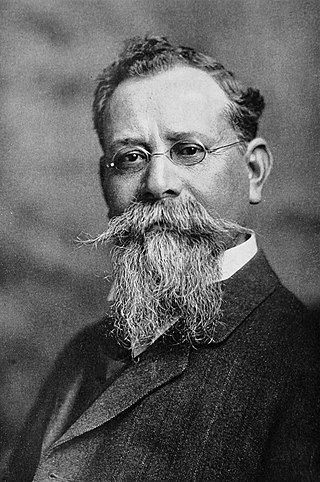
José Venustiano Carranza de la Garza was a Mexican wealthy land owner and politician who was Governor of Coahuila when the constitutionally elected president Francisco I. Madero was overthrown in a February 1913 right-wing military coup.

Gustavo Adolfo Madero González, born in Parras de la Fuente, Coahuila, Mexico, was a participant in the Mexican Revolution against Porfirio Díaz along with other members of his wealthy family. He was also known as "Ojo Parado" since he had one glass eye.

Henry Lane Wilson was an American attorney who was appointed by President William Howard Taft to the post of United States Ambassador to Mexico in 1910. He brought together opponents of Mexico's democratically-elected President Francisco I. Madero in the Pact of the Embassy, colluding with them to stage a coup d'etat in February 1913. Soon after President Woodrow Wilson took office in March 1913, he was appalled to learn that the American ambassador was involved in the plot in which the president and vice president of Mexico were murdered. President Wilson recalled him from his post as ambassador. "He became one of the most controversial envoys to serve in Mexico." "For Mexicans, Henry Lane Wilson is perhaps the most vilified U.S. official of this [20th] century."

The Plan of San Luis Potosí is a key political document of the Mexican Revolution, written by presidential candidate Francisco I. Madero following his escape from jail. He had challenged President Porfirio Díaz in the 1910 presidential elections, when Díaz was 80 years old, and garnered a broadbased following. Díaz jailed him when it became clear Madero might win. Madero escaped and drafted the plan to explain why armed rebellion against Díaz was now the only way to remove him from office. It was published on 5 October 1910. It called for nullifying the fraudulent 1910 election of Porfirio Díaz, proclaimed Madero as provisional president, and called on the Mexican people to revolt on 20 November 1910.
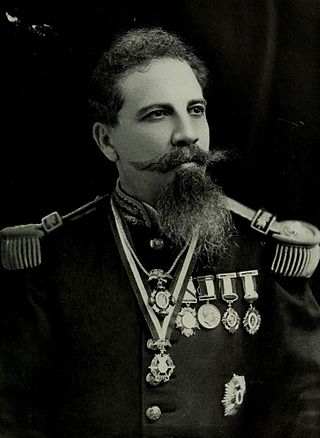
Bernardo Doroteo Reyes Ogazón was a Mexican general and politician, with aspirations to be President of Mexico. He died in a coup d'état against President Francisco I. Madero. Born in a prominent liberal family in the western state of Jalisco, he served in the army, rising to the rank of general. Like his political patron, General and then President Porfirio Díaz, Reyes was a military man who became an able administrator. Reyes was one of the state governors that Díaz appointed, serving as governor of the northern state of Nuevo León. He implemented Porfirian policy, particularly eliminating political rivals, but also building his own power base. He helped in the modernization of that state, enabling local industrialization, improving public education and health, and supporting improvements in the lives of workers. While governor of Nuevo León, Reyes approved a workers compensation law. Followers of Reyes were known as Reyistas.

Félix Díaz Prieto was a Mexican politician and general born in Oaxaca, Oaxaca. He was a leading figure in the rebellion against President Francisco I. Madero during the Mexican Revolution. He was the nephew of president Porfirio Díaz.

The Mexican Federal Army, also known as the Federales in popular culture, was the military of Mexico from 1876 to 1914 during the Porfiriato, the long rule of President Porfirio Díaz, and during the presidencies of Francisco I. Madero and Victoriano Huerta. Under President Díaz, a military hero against the French Intervention in Mexico, the Federal Army was composed of senior officers who had served in long ago conflicts. At the time of the outbreak of the Mexican Revolution most were old men and incapable of leading men on the battlefield. When the rebellions broke out against Díaz following fraudulent elections of 1910, the Federal Army was incapable of responding. Although revolutionary fighters helped bring Francisco I. Madero to power, Madero retained the Federal Army rather than the revolutionaries. Madero used the Federal Army to suppress rebellions against his government by Pascual Orozco and Emiliano Zapata. Madero placed General Victoriano Huerta as interim commander of the military during the Ten Tragic Days of February 1913 to defend his government. Huerta changed sides and ousted Madero's government. Rebellions broke out against Huerta's regime. When revolutionary armies succeeded in ousting Huerta in July 1914, the Federal Army ceased to exist as an entity, with the signing of the Teoloyucan Treaties.

The United States involvement in the Mexican Revolution was varied and seemingly contradictory, first supporting and then repudiating Mexican regimes during the period 1910–1920. For both economic and political reasons, the U.S. government generally supported those who occupied the seats of power, but could withhold official recognition. The U.S. supported the regime of Porfirio Díaz after initially withholding recognition since he came to power by coup. In 1909, Díaz and U.S. President Taft met in Ciudad Juárez, across the border from El Paso, Texas. Prior to Woodrow Wilson's inauguration on March 4, 1913, the U.S. Government focused on just warning the Mexican military that decisive action from the U.S. military would take place if lives and property of U.S. nationals living in the country were endangered. President William Howard Taft sent more troops to the US-Mexico border but did not allow them to intervene directly in the conflict, a move which Congress opposed. Twice during the Revolution, the U.S. sent troops into Mexico, to occupy Veracruz in 1914 and to northern Mexico in 1916 in a failed attempt to capture Pancho Villa. U.S. foreign policy toward Latin America was to assume the region was the sphere of influence of the U.S., articulated in the Monroe Doctrine. However the U.S. role in the Mexican Revolution has been exaggerated. It did not directly intervene in the Mexican Revolution in a sustained manner.
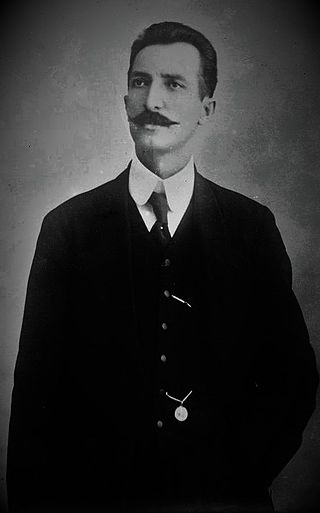
José María Pino Suárez was a Mexican statesman, lawyer, writer and newspaper proprietor who was a key figure of the Mexican Revolution and served as the 7th and last Vice President of Mexico from 1911 until 1913.

José Yves Limantour Marquet was a Mexican financier who served as Secretary of the Finance of Mexico from 1893 until the fall of the Porfirio Díaz regime in 1911. Limantour established the gold standard in Mexico, suspending free coinage of silver, and mandating only government coins be used. He secured the national debt in 1899 with a consortium of foreign banks, and at the time of the outbreak of the Revolution, Mexico was on strong financial basis. Before the Mexican Revolution he was widely seen, along with General Bernardo Reyes, as one of the stronger candidates to succeed President Díaz.

The Ten Tragic Days during the Mexican Revolution is the name given to the multi-day coup d'etat in Mexico City by opponents of Francisco I. Madero, the democratically elected president of Mexico, between 9 - 19 February 1913. It instigated a second phase of the Mexican Revolution, after dictator Porfirio Díaz had been ousted and replaced in elections by Francisco I. Madero. The coup was carried out by general Victoriano Huerta and supporters of the old regime, with support from the United States.

Constitutionalists were the third faction in the Mexican Revolution (1910–1920). Also known as Carrancistas, they were followers of Mexican president Venustiano Carranza, and consisted of mainly middle-class urbanites, liberals, and intellectuals who desired a constitution under the guidelines "Mexico for Mexicans". After the revolution they would dominate Mexican politics as the Institutional Revolutionary Party (PRI) until the early 1980s.

The Treaty of Ciudad Juárez was a peace treaty signed between the President of Mexico, Porfirio Díaz, and the revolutionary Francisco Madero on May 21, 1911. The treaty put an end to the fighting between forces supporting Madero and those of Díaz and thus concluded the initial phase of the Mexican Revolution.

The Mexican Border War, or the Border Campaign, refers to the military engagements which took place in the Mexican–American border region of North America during the Mexican Revolution. The period of the war encompassed World War I, and the German Empire attempted to have Mexico attack the United States, as well as engaging in hostilities against American forces there itself.

General elections were held in Mexico on June 26 and July 10, 1910. The contested election instigated the beginning of the Mexican Revolution and preceded the end of the 35-year period of Mexican history known as the Porfiriato.
